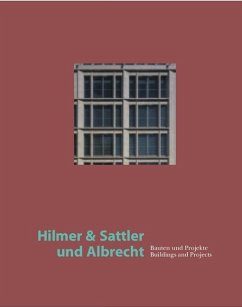Numerous buildings have been added to the oeuvre of Hilmer &Sattler and Albrecht since the year 2000, when the first book aboutthe architects' work was published by Edition Axel Menges. Butthe practice, which has had Thomas Albrecht as a partner since1994, alongside Heinz Hilmer and Christoph Sattler, has notchanged its approach in relation to previous years. Inventing somethingnew is still not central to the symbiotic work carried out bythe three co-operating partners. They are concerned with treatingaccumulated architectural memories and typologies dialectically.This is not achieved by associatively assembling quotations fromhistorical or modern architecture that are more or less justified interms of content, but by sticking rigidly to the rule that »a buildingis a building«, and nothing more. But the architects have subsequentlysharpened and perfected their treatment of historical referenceswith respect to both urban planning and to building typologiesand details. The Berlin practice has tied itself more closely tohistorical models with its buildings in Potsdamer and LeipzigerPlatz and also at the Lenné-Dreieck, now rearranged in urban developmentterms, with the Beisheim Center and the Ritz-CarltonHotel and Apartment Tower, while the Munich buildings in Karl-Scharnagl-Ring or on the Theresienhöhe keep to a formal languagemore closely related to Modernism. The new residentialbuildings in Berlin and Munich, usually intended for particularlywealthy clients, tackle new urban-development and design, whichmeans that Hilmer & Sattler und Albrecht are continuing one of thepractice's important fields of activity. One particular jewel is thelittle museum to house a reconstruction of the famous GottorfGlobe, in the Baroque garden of Schloss Gottorf near Schleswig.In this small building, as also in the Picasso Museum in Münster,the architects set off a firework display of ideas and referencesfrom European architectural history, making it possible to speak

